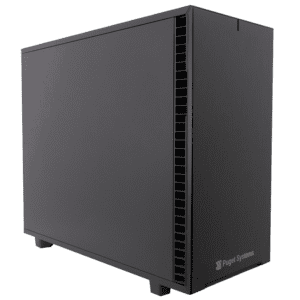In this third post on Docker and Nvidia-Docker we will configure “kernel user namespaces” for use with Docker. This will increase the security and usability of Docker on your desktop. This is a relatively new feature in Docker and is a key component for the viability of “Docker on your workstation”.
Should You Learn to Program with Python
The short answer to that question is, yes. If you want to know why you would want to do that then read on.
Docker and NVIDIA-docker on your workstation: Installation
In this second post on Docker and Nvidia-Docker we will do an install and setup on an Ubuntu 16.04 workstation.
Docker and NVIDIA-docker on your workstation: Motivation
Docker containers together with the NVIDIA-docker can provide relief from dependency and configuration difficulties when setting up GPU accelerated machine learning environments on a workstation. In this post I will discuss motivation for considering this.
NVIDIA Quadro GP100 Tesla P100 power on your desktop
NVIDIA has released the Quadro GP100 bringing Tesla P100 Pascal performance to your desktop. This new card gives you the compute performance of the NVIDIA Tesla P100 together with Quadro display capability. That means full double precision floating point capability of the P100 and NVLINK for multiple cards.
PCIe X16 vs X8 for GPUs when running cuDNN and Caffe
Does PCIe X16 give better performance than X8 for training models with Caffe when using cuDNN? Yes, but not by much!
Kabylake vs Skylake for compute on Linux — Linpack on Ubuntu 1610
OK, Intel Core-i7 7th gen Kabylake is out. Of course the first thing I want to do is drop a Core i7 7700K in a new Z270 based motherboard, install Linux and run a Linpack benchmark. You know, GFLOP/s and all that. We installed Ubuntu 1610 with a recent release of Intel MKL and fired up a few Linpack job runs. Read on for the not-so dramatic results.
NVIDIA DIGITS with Caffe – Performance on Pascal multi-GPU
NVIDIA’s Pascal GPU’s have twice the computational performance of the last generation. A great use for this compute capability is for training deep neural networks. We have tested NVIDIA DIGITS 4 with Caffe on 1 to 4 Titan X and GTX 1070 cards. Training was for classification of a million image data set from ImageNet. Read on to see how it went.
Install Ubuntu 16.04 or 14.04 and CUDA 8 and 7.5 for NVIDIA Pascal GPU
You got your new wonderful NVIDIA Pascal GPU … maybe a GTX 1080, 1070, or Titan X(P) … And, you want to setup a CUDA environment for some dev work or maybe try some “machine learning” code with your new card. What are you going to do? At the time of this writing CUDA 8 is still in RC and the deb and rpm packages have drivers that don’t work with Pascal. I’ll walk through the tricks you need to do a manual setup of CUDA 7.5 and 8.0 on top of Ubuntu 16.04 or 14.04 that will work with the new Pascal based GPU’s
NVIDIA Titan GPUs (3 generations) – CUDA 8 rc performance on Ubuntu 16.04
I have a Titan Black, Titan X (Maxwell) and a new Titan X (Pascal) in a system for a quick CUDA performance test. Install is on Ubuntu 16.04 with CUDA 8.0rc. We’ll look at nbody from the CUDA samples code and NAMD Molecular Dynamics. It is stunning to see how much the CUDA performance has increased on these wonderful GPU’s in just 3 years.
